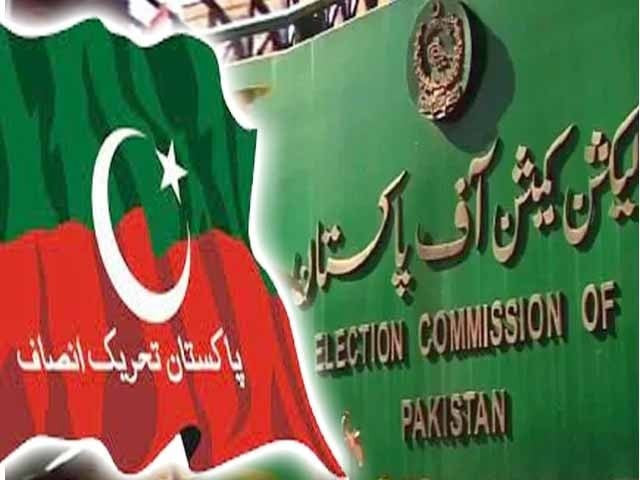
Why is Imran Khan's 'bat' symbol so special?
On November 26th, the Peshawar high court returned the bat symbol to Pakistan Tehreek-e-Insaf (PTI) after the Election Commission of Pakistan (ECP) seized it. This act of the ECP was deemed 'unconstitutional' by the high court. The ECP had previously rejected the PTI to even be instrumental in the upcoming February elections. After both of its demands were highly criticised and rejected by the High Court, Imran Khan was potentially taking part in his bat-run elections.
However, surprisingly, on January 3rd, the same high court that had supported the PTI to contest elections for being able to use its 'bat', restores the December 22nd order of the ECP, revoking the bat symbol. There are a multitude of opinions about the righteousness of Imran or the truthfulness of the ECP and the high court; it is, however, worth knowing how this symbol of the bat encompasses the whole political movement of Imran Khan and the manifesto it fights for.
What does this bat really mean? And what may be the possible repercussions of either case: the bat given or not? Or why are the 'elite forces' behind this bat?
Imran came into politics soon after winning the ICC Championship in 1992. On April 25 1996, Imran formed the PTI. His winning of the cricket championship magnetised the youth to him, who had been deprived of a sense of acquiring that trophy since Pakistan's debut in the ICC in 1952. I remember my grandfather once met Imran. He describes that Imran showed excellent and well-constructed political opinions, criticising the political elite, the then-current dilemma of political parties, and a quest for revolutionary change. My grandfather, perturbed by his keen interest, asked,
"Are you going to start a political party?"
Imran replied:
"No, hahaha, not at all."
Contradicting his own statement, Imran initiated PTI, which may be a testament to the growing support of the youth that encouraged him to pragmatically lead a party. He rallied on the streets on a manifesto of change, of revolution to be more precise. The 'change' narratives, coupled with his charismatic personality, made him an astounding figure in politics. Additionally, his philanthropic image was quite praiseworthy for the people when Imran established a large-scale free government hospital named the Shaukat Khanum Memorial Cancer Hospital and Research that previous regimes could not do or at least could not highlight. Although elections in the following year after the formation of PTI did not give Imran a seat, his party was gradually, if not rapidly, taking steps forwards and upwards.
Slowly adjusting in the tightened room of exiting parties, PTI became a prominent figure in politics, winning the provincial government of 2013 of Khyber Pakhtunkhwa. For the 2013 General Elections, Imran had drawn fans and spectators of all ages, races and traditions, save the fact that the majority of them were youth. Supporters of his 'tabdeli' (revolution) narrative gained momentum slowly and peacefully, the latter debatable though. The 2013 General Election polls suggested Imran would be the most popular leader in the country. However, he lost, blaming it on election rigging. His allegations were identified as true by the Supreme Court in 2018, eventually helping him win the elections.
What must be noted at this time is the fact that in 2010, according to the official national figures, the youth amounted to 62.19% of the population. And currently, it is 64%. Hence, Imran's popularity was directly proportional to an increase in the youth population in Pakistan. This dichotomy presented a mind-blowing situation for other parties whose 'aged-ness' and old narratives merely splintered in the psyche of the older population, and hence, those antiquated narratives did not do justice to the enthusiastic, emotionally-driven, sport-interested youth. Out of the clutches of several parties, PTI rose to remarkable heights. Reflected by the fact that Imran won the 2018 elections, to some extent thanks to the establishment as well, but his immeasurable politics of change, corrupt-free business in the country, and fighting the elite, all added to his fame, making him one of the most popular leaders. Although Nawaz Sharif's government has also taken certain steps to increase its youth support, such as formulating the Prime Minister Youth Program, it did not draw the mass political support as they expected.
But as I questioned previously, in the whole political movement of Imran Khan, all those long marches, all those cheers and bustling crowds that gathered around the name of the party, what was the role of the 'bat'?
Seemingly a political symbol, the bat constitutes a major part of Imran's politics. As I said, winning the World Cup was a revolution in itself. It was a revolution after 40 years of Pakistan playing International cricket. The Pakistani youth had been deprived of enjoying the bliss of seeing a Pakistani picking up the shimmering trophy. According to the Gilani Research Foundation, conducted by Gallup Pakistan, more than half of Pakistan's population is a cricket fan. Imran and his captaincy not only fulfilled the desires of a cricket-loving nation but also caused a 'cricket revolution' in Pakistan.
The bat symbol assures the Pakistani youth that just like they had been satisfied after a long tenure of losing the cricket game, in the future, once the Kaptaan comes up, the same revolution will occur, signalling a new dawn of the phase.
Another aspect is emotional linkage. Winning the World Cup against Australia in a moment of crisis, as Wasim Akram describes, "they were almost losing the game" when it seemed quite impossible, refers to the fact that no matter what, the youth's power (since Imran was a young person at the time himself) will totally shift the dynamics of the country.
The emotion that drives the shot through the bat is the emotion that drives the shot of GDP through Khan's bat. Emotional transparency is a difficult task for the country; it means that the country is meant to be run by those who can shoot a shot through emotional power. This is an underlying fact that without the support of youth, winning an election in free and fair terms is extremely impossible in Pakistan. And in order to gather the support of the youth, emotionally tackling it is also necessary.
The bat depicts a tale of youth participation in politics, which is pertinent for the growth of a democratic nation. On the other hand, as far as the politics of PMLN, MQM, Jamat-e-Islami, PPP, etc. are concerned, their politics are related to ensuring the youth is satisfied but silent, whereas the youth, utilising social media, want to speak and raise strong voices against what they feel is oppression. Other parties don't possess attractions palpable enough to attract the youth. Neither do their personal lifestyles resonate with the youth, nor do their political aims involve the youth. Acknowledging the fact that the bat is a symbol of Imran's revolutionary, youth-based ideas is what gives him a competitive edge in the elections against his rival.
While the 'bat' symbol has been taken away, the onlookers look vacantly at the decisions of the Supreme Court on whether it allows PTI to use its political symbol. However, if this is not the case and elections are contested without the symbol that Imran has decided, it indicates that elections are not 'free and fair'. Imran wrote an op-ed for The Economist stating:
"Now the election commission, desperate to deny the party the right to contest elections, is indulging in all manner of unlawful tricks. The court seems to be losing its credibility every day."

COMMENTS
Comments are moderated and generally will be posted if they are on-topic and not abusive.
For more information, please see our Comments FAQ